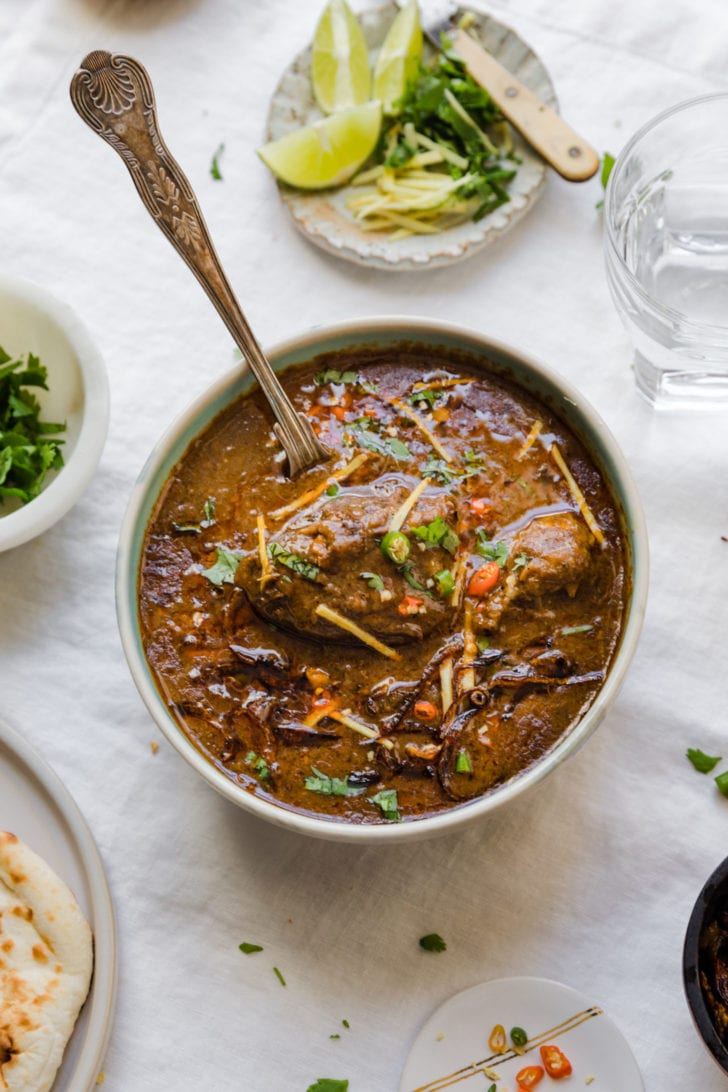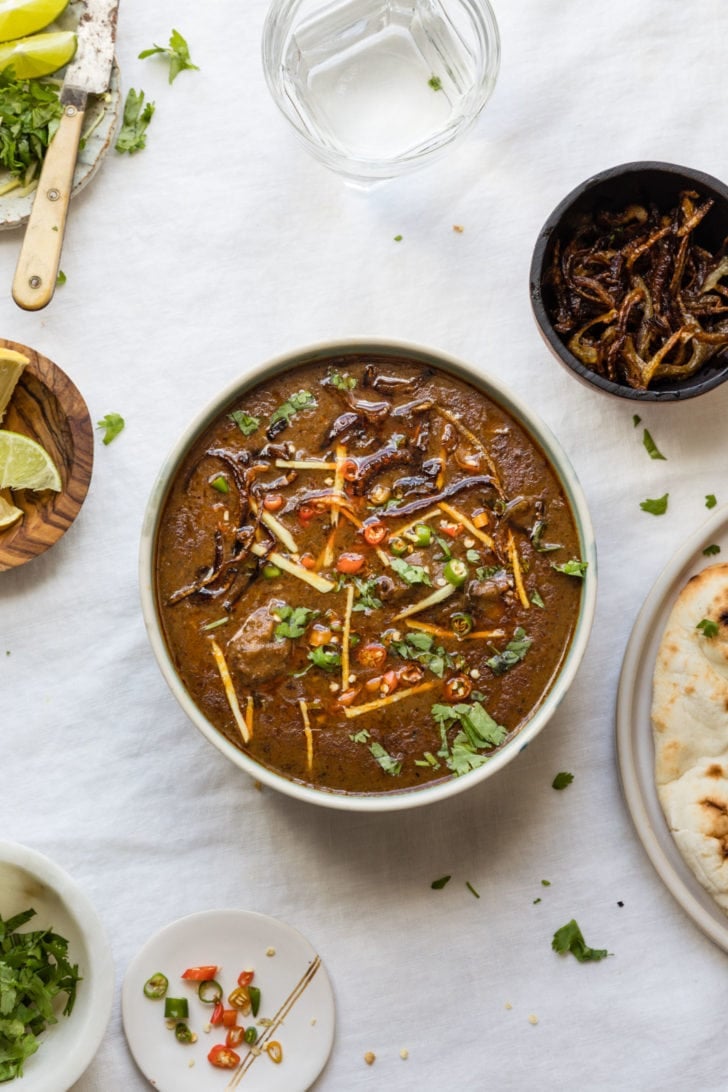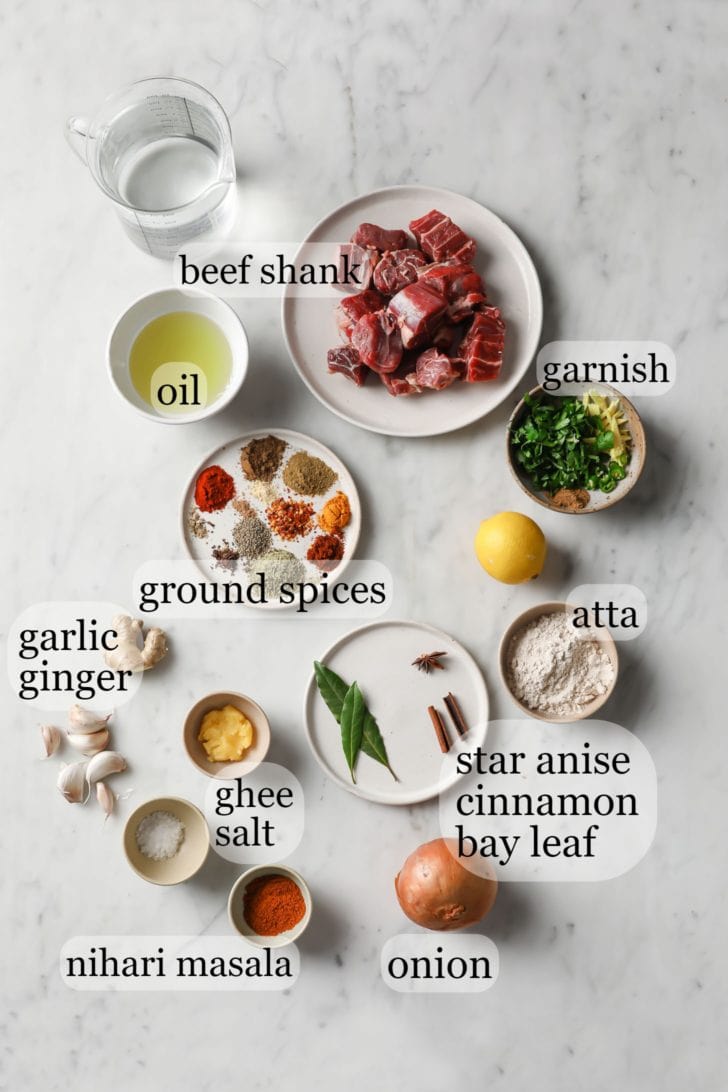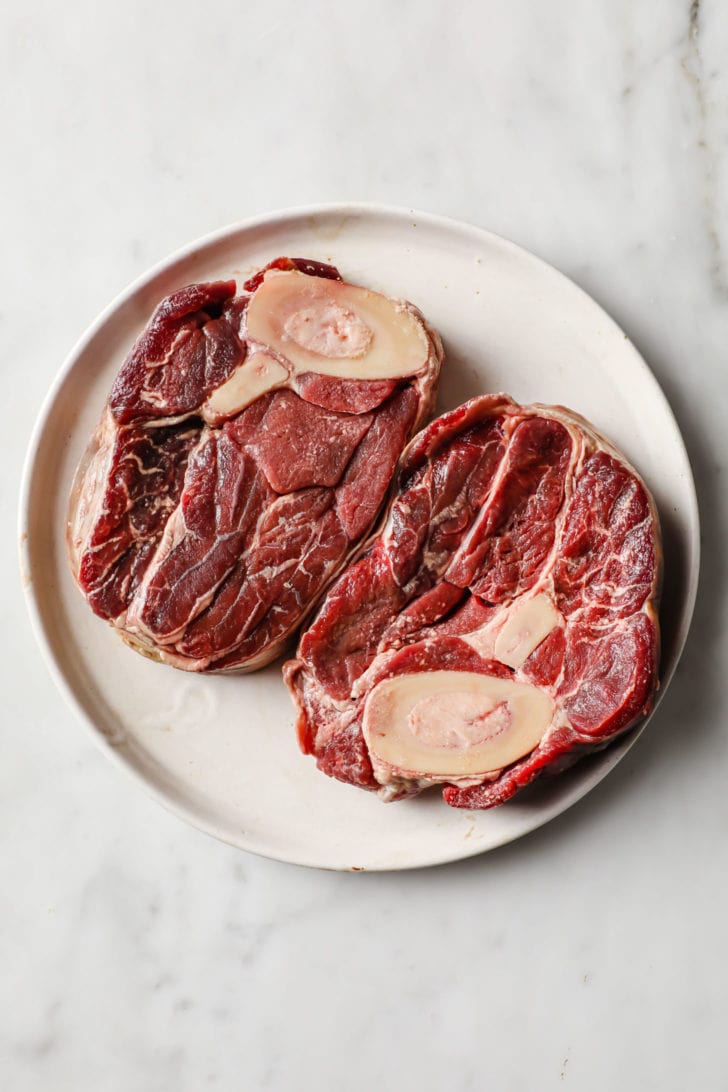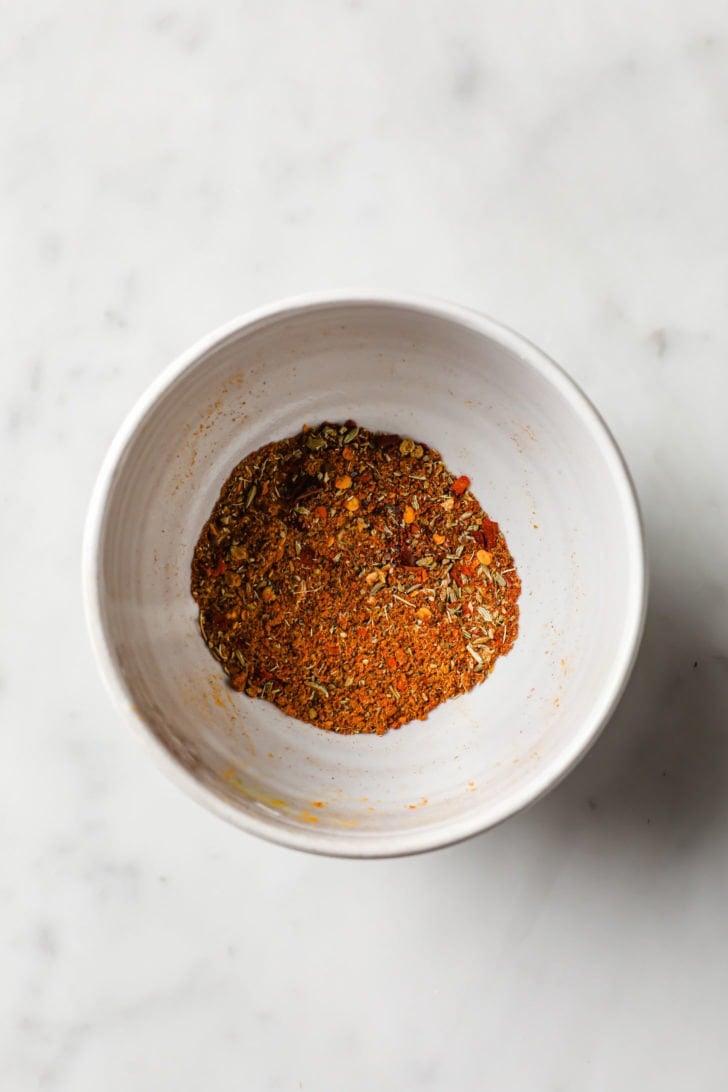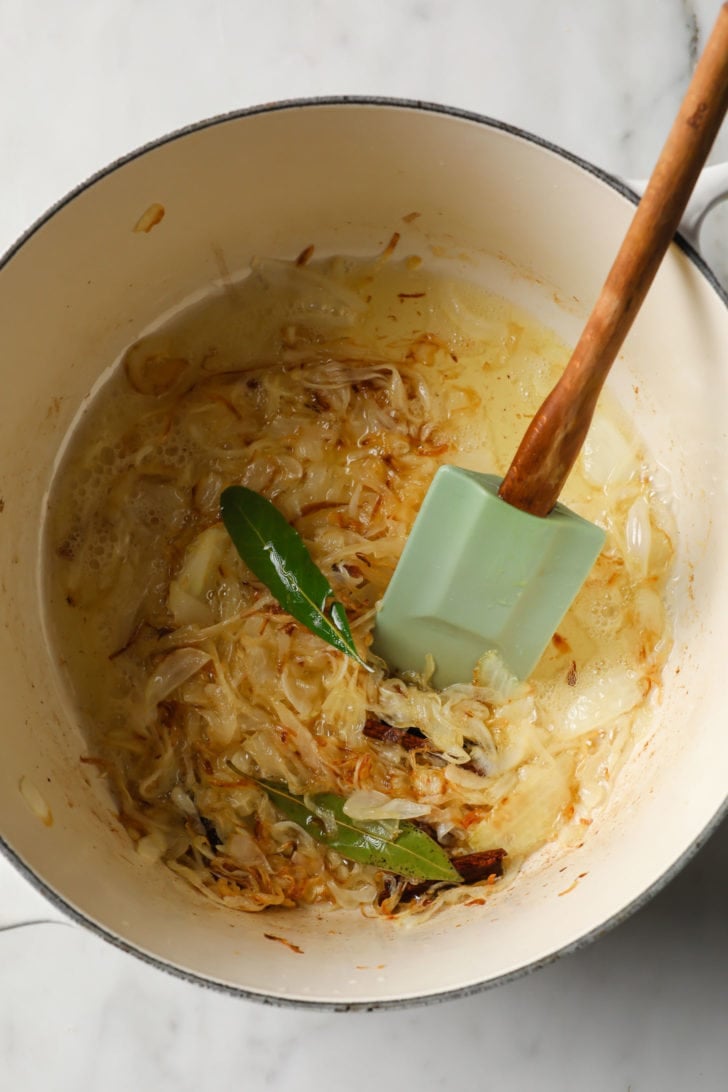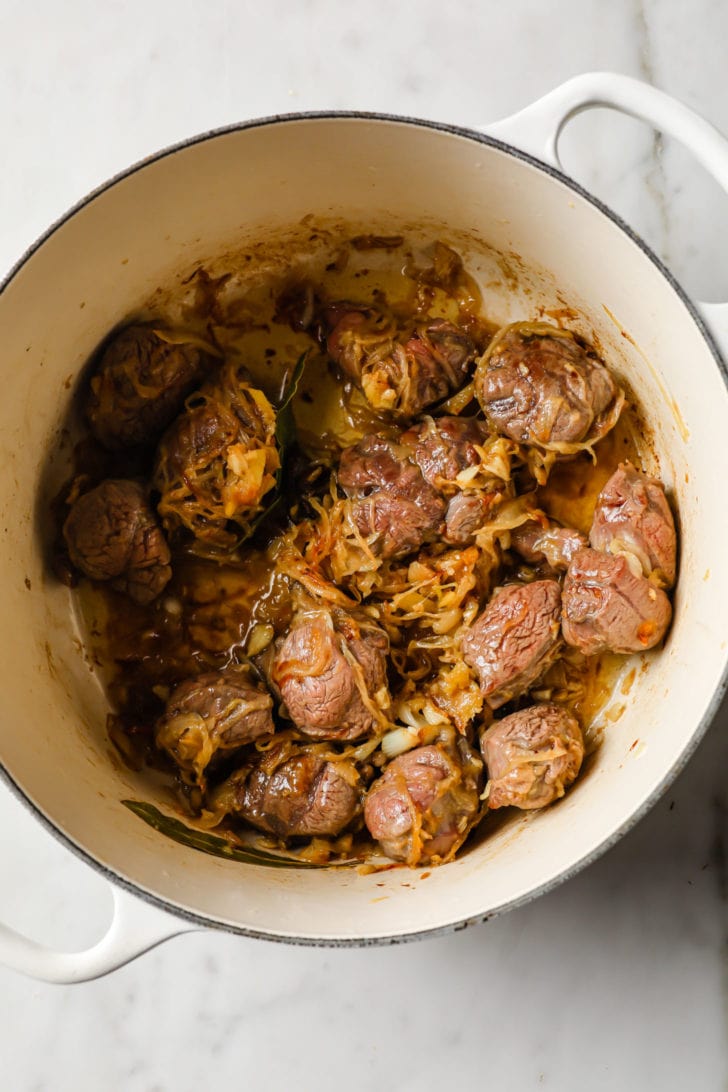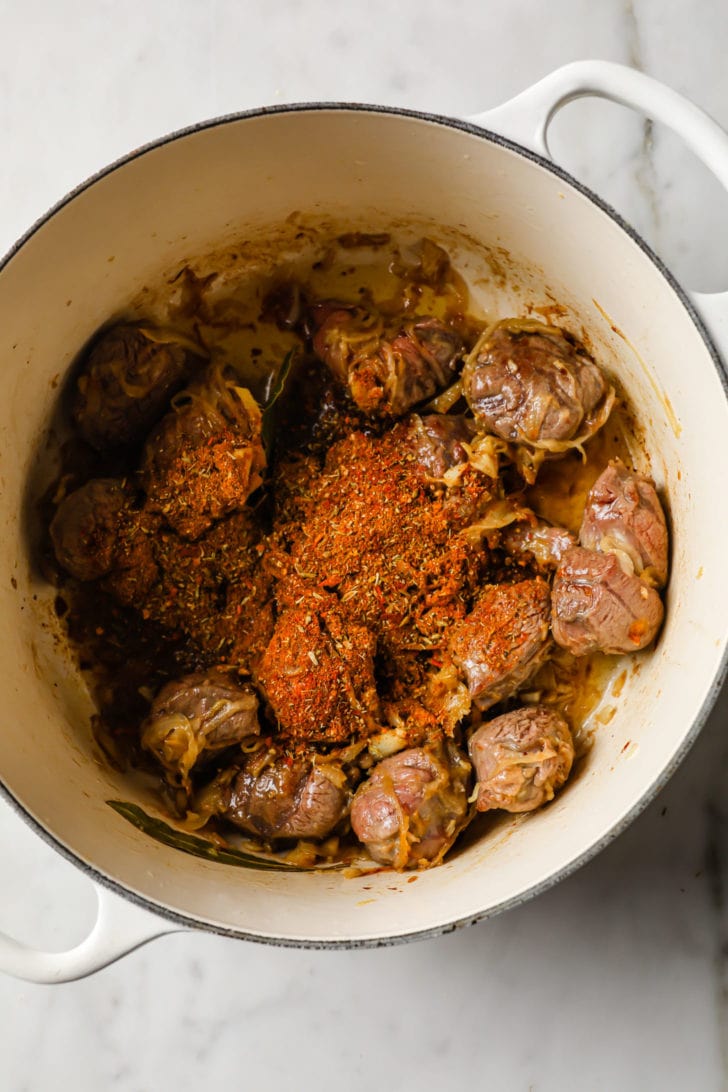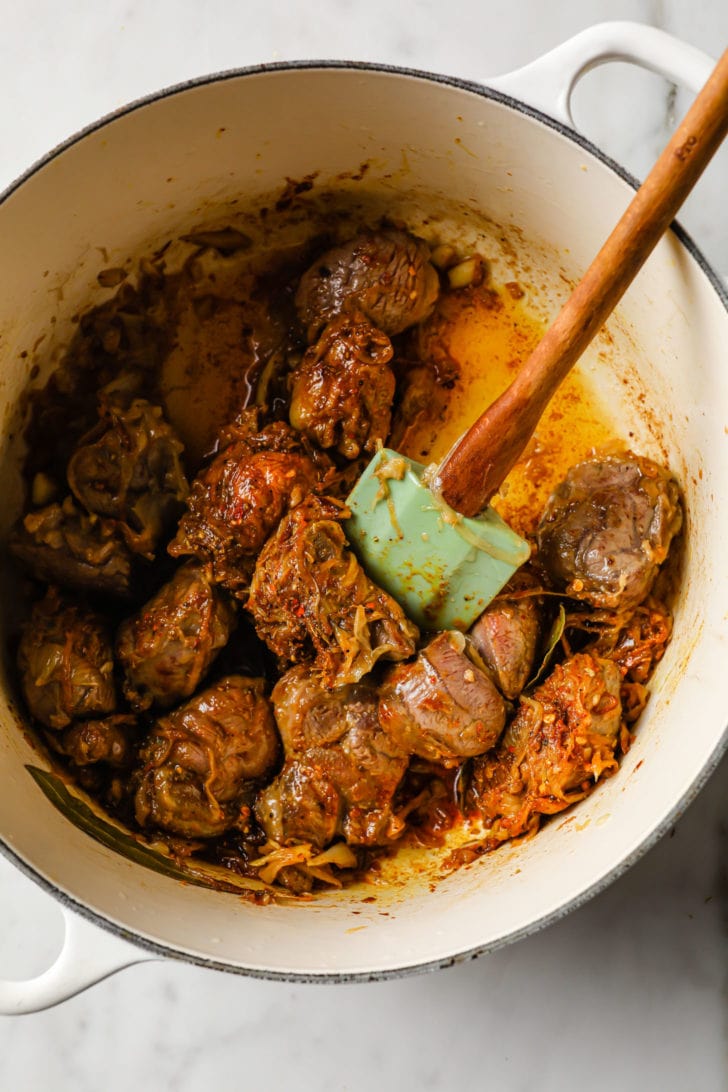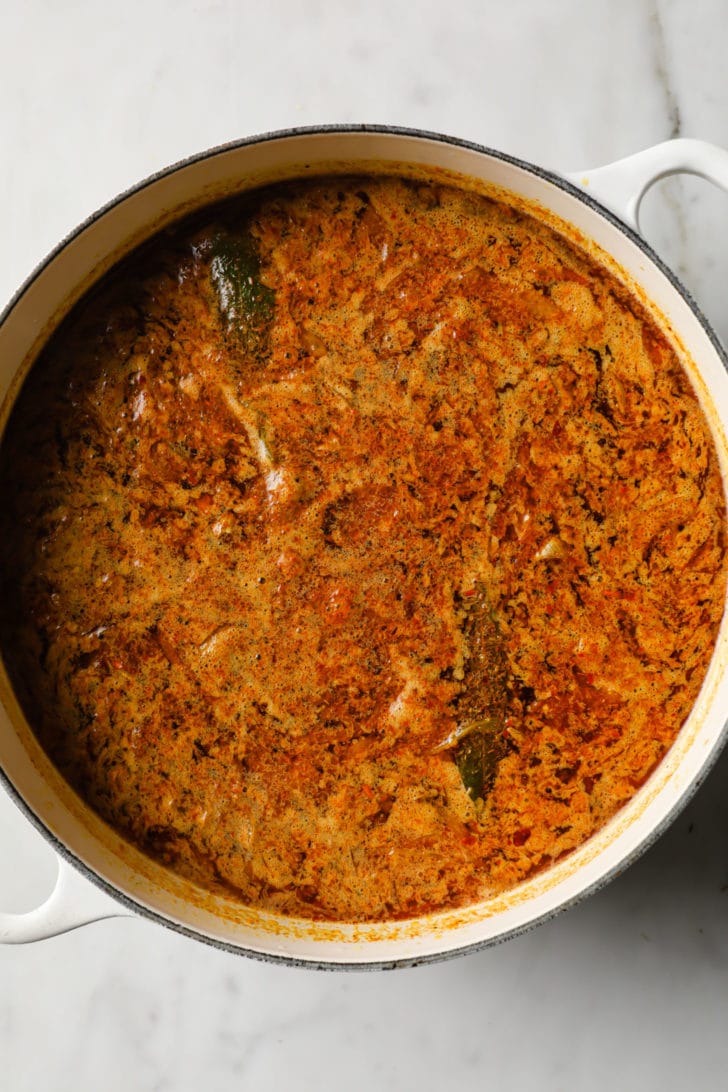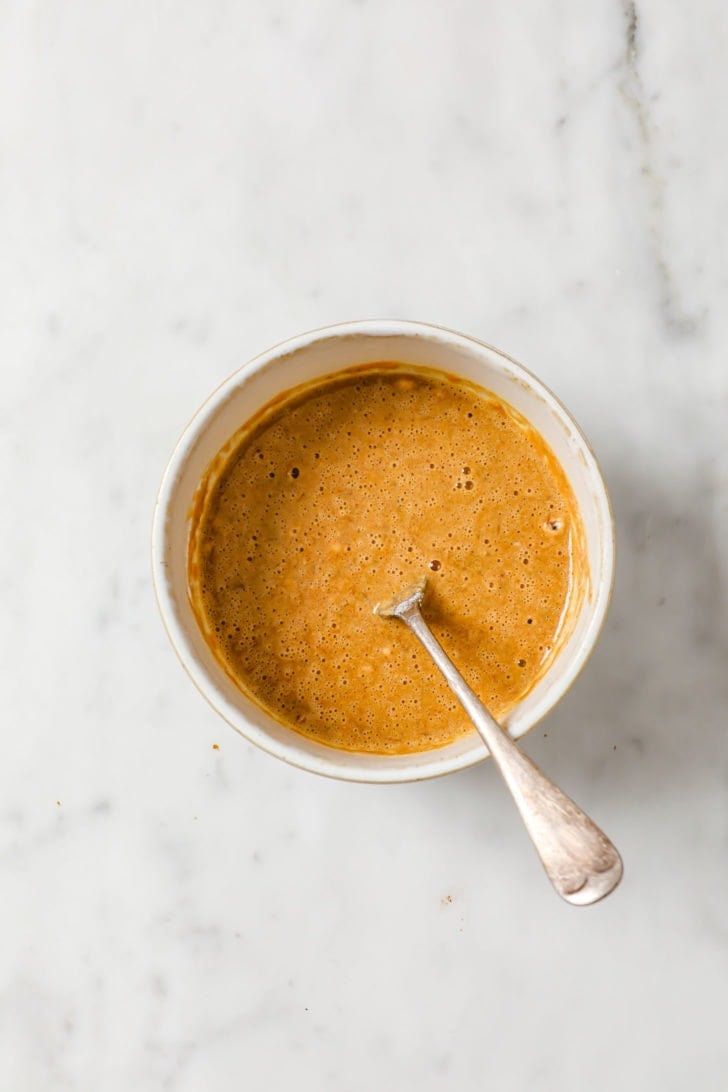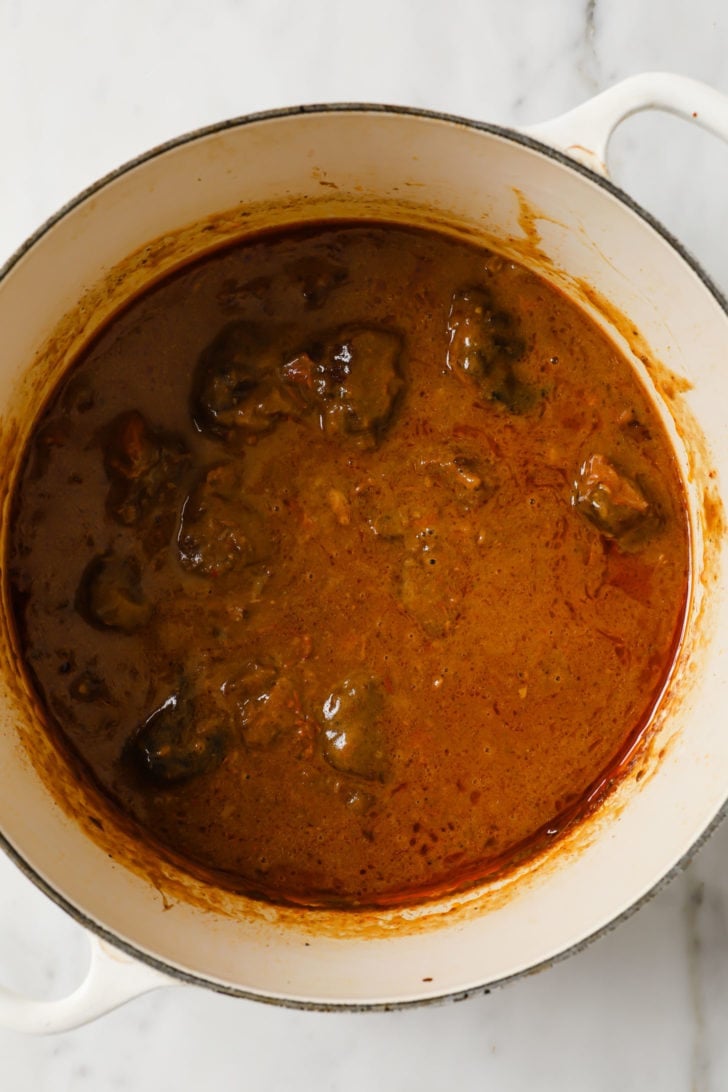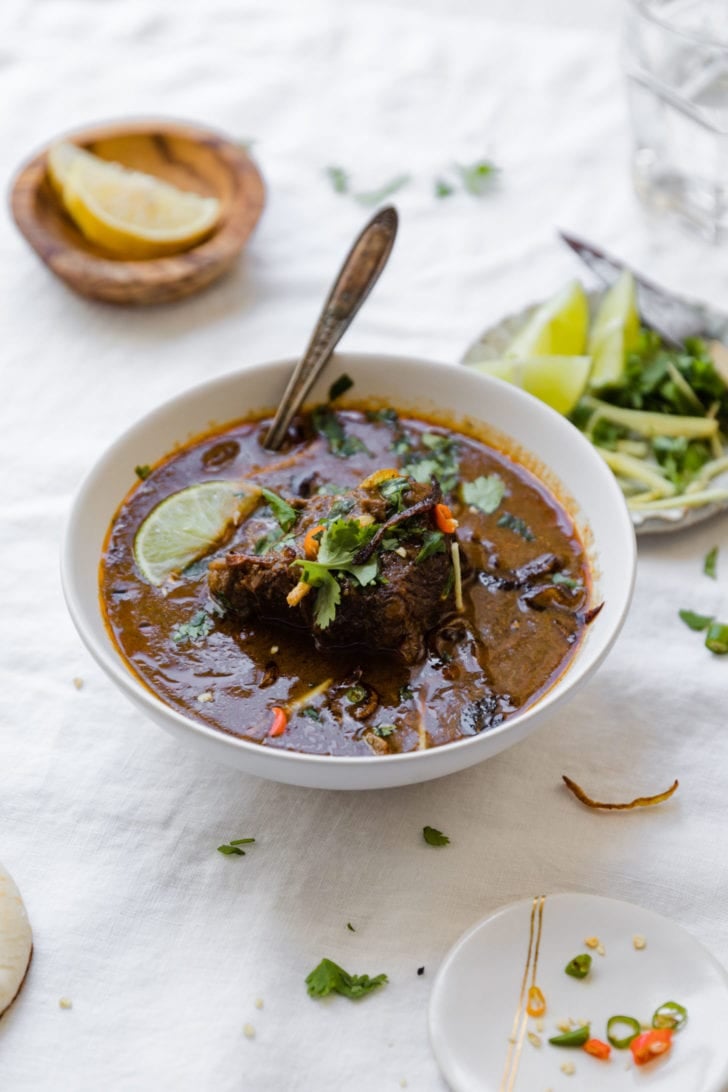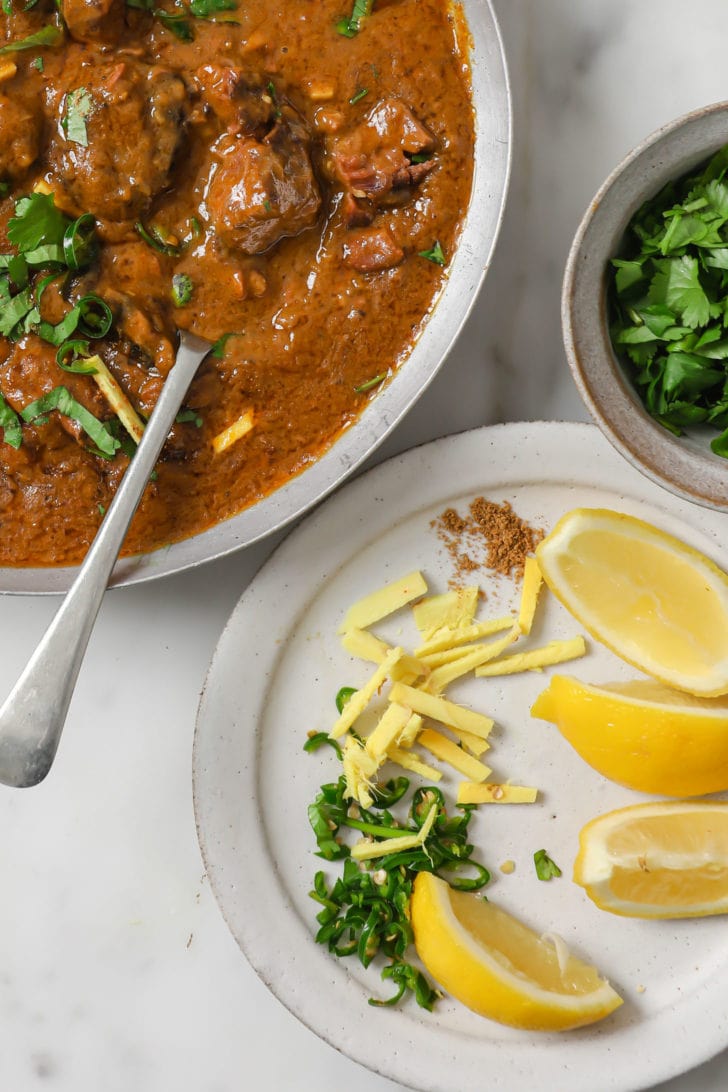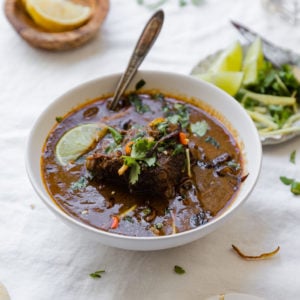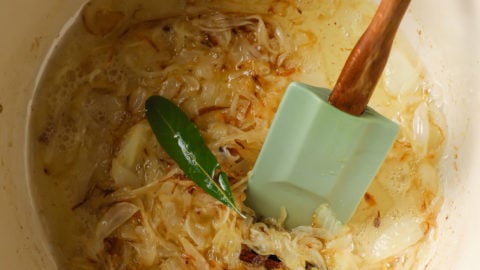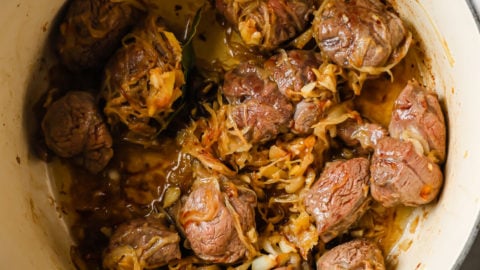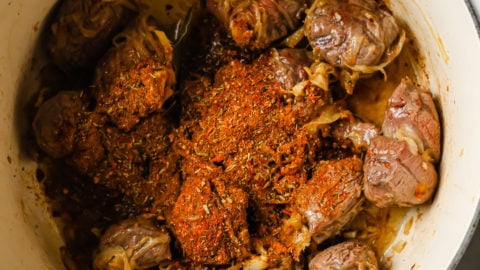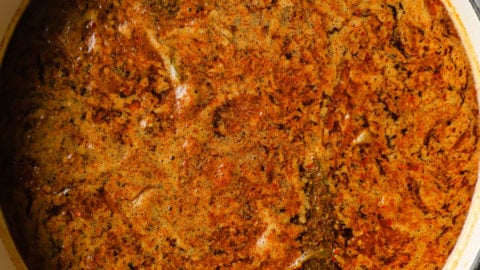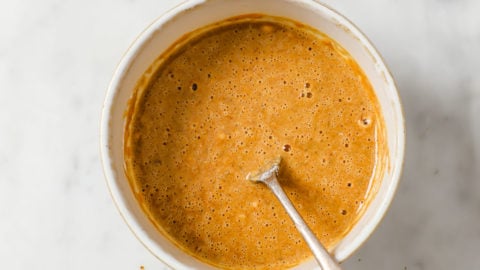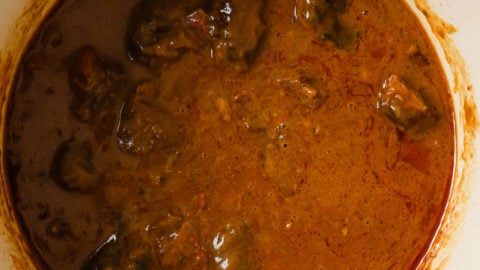Five years ago almost to this day, I published the slow cooker version of this Nihari recipe. Since then, it’s consistently been one of my most popular recipes. To be honest, I’ve often thought of improving it. (I’m always learning!) But, I dare not touch it since so many people have loved it over the years. I did update a couple things that were long overdue: Enter your email below and get it sent straight to your inbox. Plus, get recipes & tips every week! Combine both things and I have to say, I like it even better than my original.
What is Nihari?
Nihari is a rich, slow-cooked meat stew flavored with spices and thickened with atta, or Pakistani & Indian-style durum whole wheat flour. Pakistani versions of Nihari are typically made with beef, but Nihari can be made with lamb, goat meat, or chicken. The word “nihari” comes from the root Arabic word “nahar”, meaning “day” or “morning”. This dish is called Nihari because originally, it was eaten in the morning. The history suggests that it started in Old Delhi, where it was eaten by Mughal nawabs and workmen to fuel them throughout the day.
What is Nalli Nihari?
The word nalli means pipe or tube, which conveys the pipe-like bones that are used to make nihari. Nalli Nihari is made with beef bones (typically humerus or femur), which contain yellow bone marrow. This gives Nihari a rich, buttery flavor. Sometimes, the bone marrow is extracted and added to the Nihari. This recipe doesn’t require bones, but using bone-in meat or bones alongside the meat will enhance the flavor (it’s more essential in the Instant Pot version). If you do use bones, you would need around 1/3 lb extra weight in bones.
Nihari Ingredients
Other than an unapologetically long list of spices, Nihari requires simple ingredients commonly found in Pakistani cuisine:
Atta – Traditionally, atta flour, which is typically used to make rotis, is added to thicken the curry. I highly recommend you use this for an authentic taste. Substitute: All-purpose flour. I haven’t tried it myself but have heard from many who have. For added complexity, dry-roast it on a nonstick pan for 6-7 minutes on low-medium heat. It’ll turn a deeper, golden color. Spices – This recipe requires either store-bought or homemade Nihari Masala Powder (recipe below!) along with a few other whole & ground spices. As always, if you’re missing a spice (or three!), don’t let that deter you from making it.
What Cut of Meat to Use for Nihari
Nihari is typically made with boneless beef shanks, also called beef shins. Halal grocery stores will often have it labeled Nihari cut. You can also use pre-cut beef stew meat, which is essentially boneless beef that comes from the front shoulder (chuck) or rear muscle (round). If the type of stew meat is specified, I look for shoulder, as I’ve found it to be more tender. Also, try to find good quality beef. The more marbled-looking it is, the better.
Nihari Masala
Using Pre-made Nihari Masala
Because Nihari demands so many spices, I originally created this recipe using 1/2 a tablespoon of pre-made Nihari masala powder. Use too much of the powder (like the whole packet as the box suggests) and you’ll end up having Nihari that tastes a bit manufactured and a lot like your fellow Pakistani neighbor’s Nihari because they used the same powder. Use just a bit and it’ll give your dish an extra oomph and good color. Also, I’ve had many questions about using just the spice mix. I’m not above using pre-made spice mixes, but I prefer not to use the suggested quantities because it can taste quite harsh. Plus, the flavors are just more pronounced when you use fresh spices. Keep in mind that you’ll need to adjust the salt/spice level depending on which brand and how much masala you use.
Homemade Nihari Masala
As always, I prefer to use fresh, homemade spices when I can. It took me a while, but I finally created a Nihari Masala Powder that works with this recipe. Nihari Masala – makes ~1 tbsp, all of which you’ll use
½-1 tsp Kashmiri red chili powder or paprika, for color 1 small black cardamom pod 1 small (1- inch) mace blade (or piece of mace) 3/4-inch peepli (long pepper) 1/4 tsp fennel seeds (saunf) 1/4 tsp garam masala powder 1/4 tsp ginger powder 1/4 tsp onion powder 1/8 tsp caraway seeds (shah zeera) 1/8 tsp nigella seeds (kalonji) pinch cane sugar
To make this Nihari Masala powder, combine all of these ingredients in a spice grinder and process until a powder forms.
How to make Nihari
The key to a great nihari is intentional depth of flavor. Deeply brown onions, fresh spices infusing the oil, meat that’s properly braised..all this contributes to the revered taste of nihari.
How to get the oil (tari) on top of Nihari
Once a curry is cooked, the fats and oil naturally surface to the top. Typically with Nihari, the oil releases once meat has cooked and also once the atta is cooked. Since I don’t use as much oil as some traditional recipes, it won’t appear as oily as most restaurant Niharis. To the get oil to rise to top, allow to simmer uncovered on low heat for 5 minutes after you’re done cooking. You can also either reserve oil before adding the atta or add a tarka (tempering of oil) with spices to give Nihari its distinct layer of oil on top.
More Tips for Making Nihari
Nihari meat should be very tender. It’s not done once cooked, but when it’s practically shredding to the touch. The end result should be like a thick soup or gravy. If it gets too thick, simply add (preferably boiling) water to thin it out. Sauté again to desired consistency. If using a slow cooker and the end result is too thin, transfer to the stovetop to thicken to your desired consistency. Restaurants will often keep the pieces very large (~3-4 inches). Kenji López-Alt points out that large cuts keep the meat more tender. I typically go for smaller sized cubes because it’s easier to eat & serve than a handful of large chunks. Variation: For more body and slight tang, whisk in 1-2 tbsp yogurt to the atta slurry before adding it to the Nihari.
How to make Gluten-Free Nihari
After several experiments, I figured out how to make the best gluten-free version of nihari. You simply dry roast brown rice flour or sorghum flour for 3-4 minutes on low-medium heat and use it as a substitute for atta flour. Dry roasting it enhances the flavor and replicates the earthy taste of atta. Try it with my gluten-free no-yeast naan!
What to serve with Nihari
Similar to Haleem, Nihari is typically served as a main dinner course or brunch dish. It’s generally served with naan or sheermal, a slightly sweet flatbread. Garnishing is always served alongside nihari. Lemon wedges, julienned ginger, chopped cilantro and (tolerable) chopped green chili peppers are essentials. They bejewel your Nihari while enhancing the spicy, tangy, and crunchy factor. Tried this recipe? If you have a minute, please leave a comment & star rating below and tell me how it was! If you’re on Instagram, please tag me so I can see your creations. I truly love hearing from you! Thank you!
More Pakistani Beef Recipes You’ll Love
Pakistani Beef Kofta Curry (Meatball Curry) Easy Pakistani Haleem Recipe (Instant Pot) Pakistani Seekh Kebabs (Ground Beef Skewers) Chapli Kabab Easy Instant Pot Pakistani Beef Curry (Stew) Aloo Keema (Ground Beef & Potato Curry)
